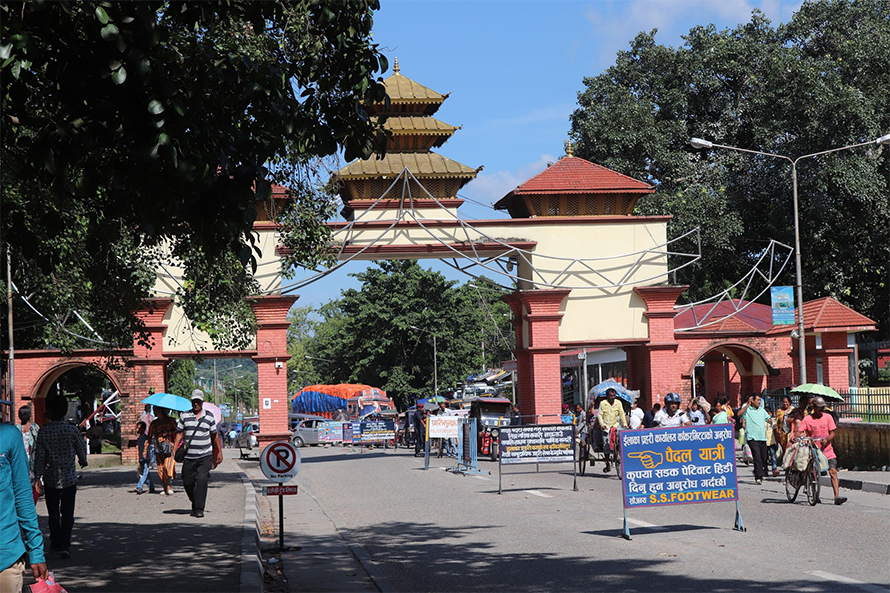Nepal’s economy to grow by 4.5 percent
Nepal’s economy is projected to grow 4.5 percent in FY25, up from 3.9 percent in FY24, despite significant natural disasters in late 2024. Growth is expected to be driven by increased domestic trade, hydropower generation and paddy production, according to the World Bank’s latest Nepal Development Update: Leveraging Resilience and Implementing Reforms for Boosting Economic Growth, released on Thursday.
The report also forecasts that Nepal’s economy will grow at an average annual rate of 5.4 percent in FY26 and FY27, driven largely by the services sector.
“Boosting private sector-led economic growth is critical to creating the jobs that Nepal needs. To achieve this, Nepal can build on its impressive track record of resilient growth backed by implementing key structural reforms,” said David Sislen, World Bank Country Division Director for Maldives, Nepal, and Sri Lanka.
The report highlights downside risks to the economic outlook, including geopolitical and trade-related uncertainty. It also points to the potential further deterioration of asset quality in Nepal’s financial sector, the risk of policy inconsistency arising from frequent bureaucratic changes in the government, and delays in the execution of the capital expenditure budget.
“The Nepal Development Update provides valuable insights on recent economic developments and highlights Nepal’s resilient growth. Boosting growth further to meet the country’s 16th Plan targets requires effective execution of the capital budget and timely completion of ongoing projects,” said the Vice-chairperson of the National Planning Commission, Shiva Raj Adhikari. The Nepal Development Update, produced biannually, offers a comprehensive analysis of key economic developments over the past year, placing them within a long-term global context.
Gold price drops by Rs 3, 900 per tola on Friday
The price of gold has dropped by Rs 3, 900 per tola in the domestic market on Friday.
According to the Federation of Nepal Gold and Silver Dealers' Association, the gold is being traded at Rs 176, 400 per tola today. It was traded at Rs 180, 300 per tola on Thursday.
Similarly, the silver is being traded at Rs 1, 870 per tola today.
Nepse surges by 3. 35 points on Thursday
The Nepal Stock Exchange (NEPSE) gained 3. 35 points to close at 2,703.39 points on Thursday.
Similarly, the sensitive index surged by 2. 30 points to close at 450. 08 points.
A total of 15,502,998-unit shares of 324 companies were traded for Rs 7. 84 billion.
Meanwhile, Green Ventures Limited (GVL) was the top gainer today, with its price surging by 9. 99 percent.
Likewise, Upakar Laghubitta Bittiya Sanstha Limited (ULBSL) was the top loser as its price fell by 7.85 percent.
At the end of the day, total market capitalization stood at Rs 4. 48 trillion.
NepalPay domestic card scheme goes live
Nepal has taken a significant leap toward financial sovereignty with the launch of the second phase of national payment switch and domestic card scheme—NepalPay.
The initiative, led by Nepal Clearing House Ltd (NCHL), will end the existing reliance on international networks such as Visa and Mastercard for card payments.
Nepal Rastra Bank (NRB) Governor Maha Prasad Adhikari officially inaugurated the Nepal Pay card by making a point-of-sale (POS) payment using a new NepalPay card.
NCHL had signed an agreement with ACI Worldwide for the establishment and operation of National Payment Switch (NPS) that includes interoperability of card-based transactions (NPS National Card Switch or NPS-NCS) and the rollout of NepalPay domestic card scheme.
The introduction of the domestic card scheme is a milestone in Nepal’s financial journey as it ensures that transaction data remains within the country while enhancing security, affordability and efficiency.
So far, banks and financial institutions in Nepal have been dependent on international payment gateways for processing debit and credit card transactions. Such transactions incurred significant costs to banks in foreign currency which is ultimately passed on to consumers. With the introduction of NepalPay, the country can retain more of its financial resources, leading to a more self-sufficient and cost-effective banking environment.
One of the primary advantages of Nepal Pay is its ability to store customer transaction data within Nepal. This reduces the risk of external data breaches, providing enhanced security and greater control over financial transactions. Additionally, as the national payment switch charges lower routing fees, banks and financial institutions can pass on cost savings to customers.
“Payments processed through international providers used to incur additional fees, but with a domestically operated card, those expenses will be saved,” Governor Adhikari said during the inauguration ceremony.
NepalPay cards will function like the existing debit and credit cards issued by banks and financial institutions, allowing users to make transactions at ATMs and POS terminals. Banks and financial institutions interested in issuing NepalPay cards can do so by entering into agreements with NCHL.
Since November 2021,NCHL has been implementing the first phase of the national payment switch, enabling transactions through bank accounts, e-wallets, and quick response (QR) codes. The launch of Nepal Pay further strengthens this digital infrastructure, paving the way for a more streamlined financial system.
Several banks and financial institutions have already partnered with NCHL to issue NepalPay cards. These include Citizens Bank, Goodwill Finance Limited, Himalayan Bank, Machhapuchhre Bank, Muktinath Bikas Bank, NMB Bank, Prabhu Bank, Shangrila Development Bank, and Siddhartha Bank.
NCHL plans to introduce credit, prepaid and virtual cards in phases. The long-term vision includes integrating NepalPay with bank switches and exploring international expansion.



















